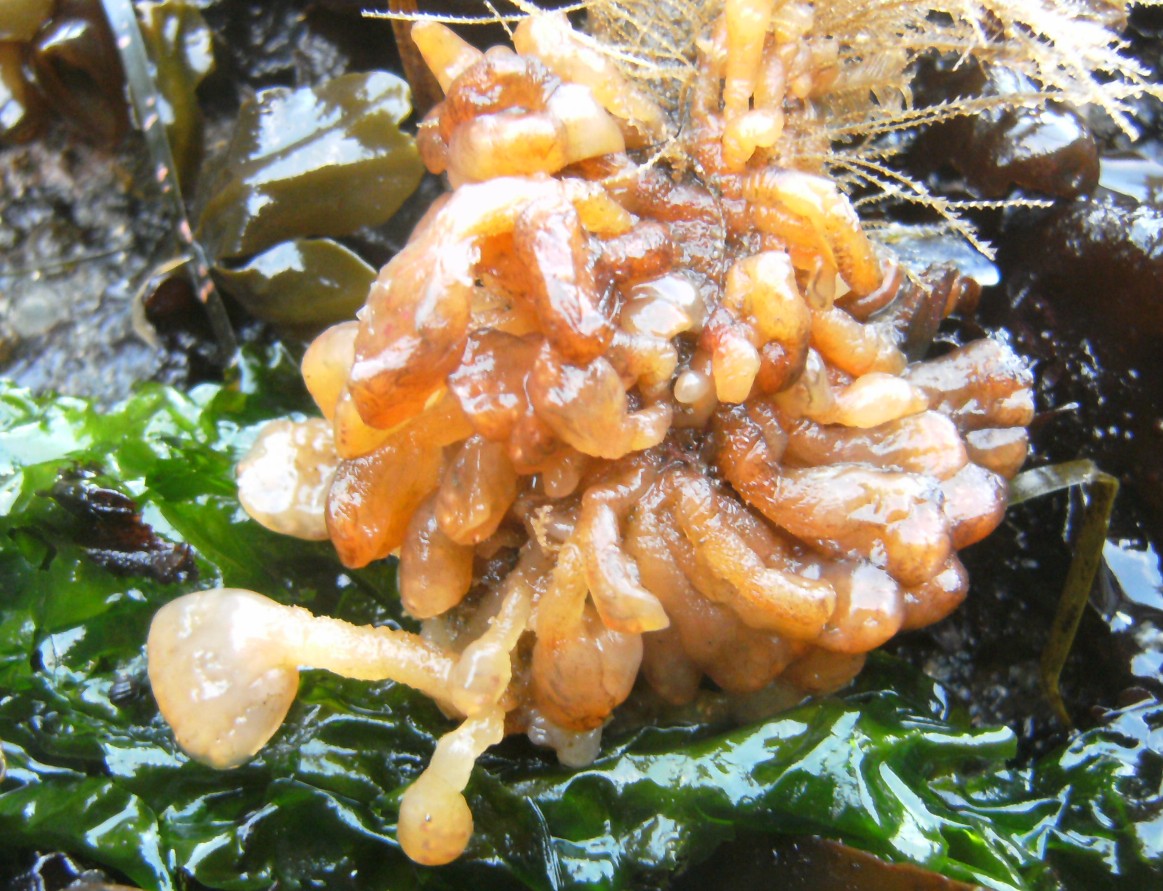This species was named in honor of Ralph Smith who was an early author of Light's manual.
How to Distinguish from Similar Species: Colony shape is similar to that of Sycozoa. Distaplia occidentalis grows in club or mushroom-shaped colonies.
Geographical Range: Prince William Sound, Alaska to Monterey Bay, CA
Depth Range: Very low intertidal to 15 m depth.
Habitat: Open coast on rocks. Under ledges, on channel or cave walls in areas with surge or strong current but not direct wave shock.
Biology/Natural History: Functional zooids occur only in the flattened blades, not in the stalks (though developing "blastozooids" can be found in the stalk). The zooids are arranged in double-rowed "systems" primarily visible from only one side of the blade. Zooids in a system are arranged alternately on opposite sizes of a common cloacal tube that empties out the tip of the blade. The oldest zooids in the system are at the distal edge of the blade and the youngest are proximal. As the colony grows old zooids may be shed from the distal end and new zooids added on the proximal end of the paddle.
Sexual reproduction occurs in the first six months of the year. Gonads develop in January and February. The testes develop first then later the ovaries develop. The ripe eggs are orange. Orange developing larvae are kept in brood pouches such as those in Distaplia occidentalis and are visible especially April-June. Most of the tadpole larvae have been liberated by July.
In central California, some colonies contain parasitic
copepods.
| Return to: | |||
| Main Page | Alphabetic Index | Systematic Index | Glossary |
References:
Dichotomous Keys:Carlton, 2007
Kozloff, 1987, 1996
Smith and Carlton, 1975
General References:
Harbo,
1999
Lamb
and Hanby, 2005
Morris
et al., 1980
Scientific Articles:
Web sites:
General Notes and
Observations:
Locations, abundances, unusual behaviors:
Authors and Editors of Page:
Dave Cowles (2010): Created original page
CSS coding for page developed by Jonathan Cowles (2007)
Rosario Invertebrates web site provided courtesy of Walla Walla University
